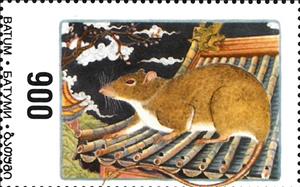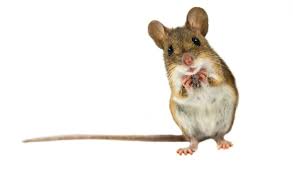Stamp: Mice (Georgia, Batumi 1996)
Mice (Georgia, Batumi 1996)
01 January (Georgia, Batumi ) within release Mice goes into circulation Stamp Mice face value 900 Georgian kapeki
| Stamp Mice in catalogues | |
|---|---|
| Colnect codes: | Col: GE-BT 1996-14A/2 |
Stamp is square format.
This item has been denounced in Georgia 2001 UPU Circular 50 as illegally produced without the authorization of the postal administration.Also in the issue Mice:
- Mini Sheet - Mice face value 4,350;
- Stamp - Mice face value 450;
- Stamp - Mice face value 450;
- Stamp - Mice face value 900;
- Stamp - Mice face value 900;
- Stamp - Mice face value 1,200;
- Stamp - Mice face value 1,200;
- Stamp - Mice face value 1,800;
- Stamp - Mice face value 1,800;
- Souvenir Sheet - Mice face value 2,000;
- Stamp - Mice face value 2,000;
|
Data entry completed
53%
|
|
|---|---|
| Stamp Mice in digits | |
| Country: | Georgia, Batumi |
| Date: | 1996-01-01 |
| Print: | Offset lithography |
| Emission: | Illegal |
| Format: | Stamp |
| Face Value: | 900 Georgian kapeki |
Stamp Mice it reflects the thematic directions:
Animals are multicellular, eukaryotic organisms of the kingdom Animalia (also called Metazoa). All animals are motile, meaning they can move spontaneously and independently, at some point in their lives. Their body plan eventually becomes fixed as they develop, although some undergo a process of metamorphosis later on in their lives. All animals are heterotrophs: they must ingest other organisms or their products for sustenance.
Mammals are any vertebrates within the class Mammalia (/məˈmeɪli.ə/ from Latin mamma "breast"), a clade of endothermic amniotes distinguished from reptiles (including birds) by the possession of a neocortex (a region of the brain), hair, three middle ear bones and mammary glands. All female mammals nurse their young with milk, secreted from the mammary glands. Mammals include the largest animals on the planet, the great whales. The basic body type is a terrestrial quadruped, but some mammals are adapted for life at sea, in the air, in trees, underground or on two legs. The largest group of mammals, the placentals, have a placenta, which enables the feeding of the fetus during gestation. Mammals range in size from the 30–40 mm (1.2–1.6 in) bumblebee bat to the 30-meter (98 ft) blue whale. With the exception of the five species of monotreme (egg-laying mammals), all modern mammals give birth to live young. Most mammals, including the six most species-rich orders, belong to the placental group. The largest orders are the rodents, bats and Soricomorpha (shrews and allies). The next three biggest orders, depending on the biological classification scheme used, are the Primates (apes and monkeys), the Cetartiodactyla (whales and even-toed ungulates), and the Carnivora (cats, dogs, seals, and allies).
A mouse (pl.: mice) is a small rodent. Characteristically, mice are known to have a pointed snout, small rounded ears, a body-length scaly tail, and a high breeding rate. The best known mouse species is the common house mouse (Mus musculus). Mice are also popular as pets. In some places, certain kinds of field mice are locally common. They are known to invade homes for food and shelter.



